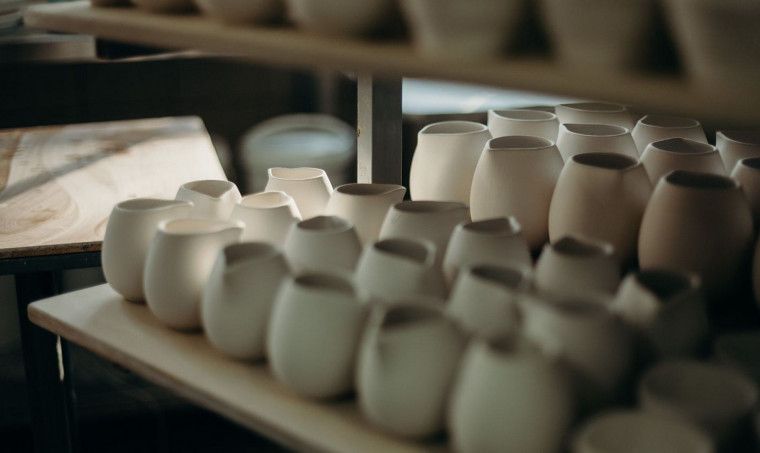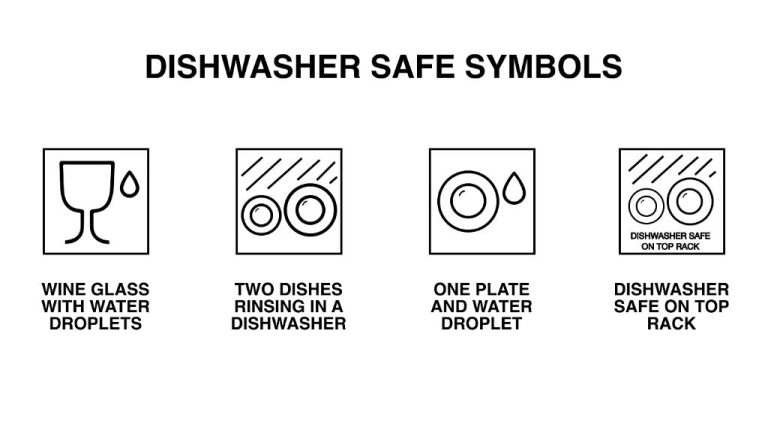What Kind Of Material Is Clay?
What is Clay?
Clay is a fine-grained natural sedimentary rock composed primarily of minerals such as aluminum silicates, magnesium silicates, and iron silicates. It forms from the weathering and erosion of rocks over long periods of time. Clay particles are less than 0.002 mm in size, which gives clay its smooth, sticky texture when wet.
The chemical composition of clay varies depending on its source, but the most common clays are formed from decomposed granite, shale, and volcanic ash. The small size and electrical charges of clay particles allow them to absorb and interact with water, organic matter, and other minerals, making clay a very versatile material.
Some key properties of clay are its plasticity, shrinkage, and cohesiveness when wet, and its hardness and durability when fired at high temperatures. These characteristics allow clay to be shaped and molded when wet, but also fired and hardened into ceramic material. Clay can range in color from white, to red, brown, and even black depending on mineral composition.
Overall, clay is an abundant sedimentary material composed of fine mineral particles that demonstrate unique properties and capabilities. It can be molded when wet, fired when dry, and contains minerals that interact in special ways with other materials, making it incredibly useful.
Types of Clay

There are many different types of clay, but some of the most common types used in pottery and construction include:
- Kaolin – Also known as China clay, this very pure clay is white in color. It is used to make porcelain and fine china. Kaolin clay has a high fusion temperature and very white when fired, making it ideal for creating porcelain. (Source: https://www.soulceramics.com/pages/types-of-clay)
- Ball clay – This is a secondary clay that combines kaolin and other clays and minerals. Ball clay is often used in stoneware and earthenware bodies as it adds plasticity and strength. It fires to a light cream or tan color. (Source: https://wheelandclay.com/blog/4-types-of-clay/)
- Fire clay – A dense and heat resistant clay that can withstand extremely high temperatures, fire clay is used to line kilns and fireboxes. It can be used on its own or added to stoneware or porcelain to increase heat resistance. Fire clay fires to a buff or light brown color. (Source: https://wheelandclay.com/blog/4-types-of-clay/)
Clay Formation
Clay is formed from the gradual chemical weathering of rocks over long periods of time. The minerals within rocks, such as feldspar and mica, slowly break down through contact with water, air, acids, and living organisms. This weathering process frees individual mineral particles from the original rock.
These tiny particles are then transported downstream by moving water and deposited in still bodies of water in layered sediments. Over time, the layers build up into deposits of fine-grained particles that geologists classify as clay if they meet certain criteria for plasticity and particle size. The most common clays include kaolinite, montmorillonite-smectite, illite, and chlorite.
As source rocks continue to weather and transport downstream, new layers of clay sediments accumulate. The immense pressures underneath cause the clay particles to bond tightly together in layered sheets. When the pressures are released by geologic uplift, the clay sheets maintain their new structure, creating clay deposits, soil horizons, and rocks.
So in summary, clays are formed by the gradual weathering of other rocks, transported and deposited as sediments, then lithified into clay minerals we can mine for use today. The composition and properties of the original source rocks heavily influence the specific types of clays formed.
Source: http://www.claygroundcollective.org/how-is-clay-formed-is-it-inorganic-or-organic/
Clay Composition
Clay is composed primarily of phyllosilicate minerals, which contain silicon, aluminum, oxygen, and hydrogen in their framework structure. The most common phyllosilicate minerals in clay are kaolinite, montmorillonite, and illite (Sturz, 2022).
The chemical composition of clay varies depending on the specific clay mineral present, but the basic building blocks are silica tetrahedra and alumina octahedra. In kaolinite, for example, the chemical formula is Al2Si2O5(OH)4, consisting of one silica tetrahedral sheet and one alumina octahedral sheet. Montmorillonite has a variable chemical formula, typically with more silica and magnesia or iron. Illite has a formula closer to KAl2(AlSi3O10)(OH)2 (Kumari, 2021).
Trace amounts of other elements can also be found in clays, including iron, magnesium, calcium, sodium, and potassium. The specific chemical composition influences the properties and uses of the clay.
Clay Properties
Clay has a number of unique physical and chemical properties that make it useful for various applications. The key properties of clay include:
Plasticity
Clay is highly plastic due to its plate-shaped microscopic particles. When mixed with water, clay becomes very malleable and can be molded into different shapes, making it ideal for pottery and ceramics. The plasticity of clay depends on the specific clay mineral composition, particle size, and amount of water absorbed.
Cohesiveness and Binding Abilities
The flat shape of clay particles allows them to adhere tightly together, giving clay high cohesion and binding abilities. This makes clay effective as a binder, stabilizer, and thickener in construction materials, cosmetics, pharmaceuticals, and food production. The binding properties of clay also aid in purifying water by absorbing toxins and waste.
Uses of Clay
Clay has many important uses in various industries and manufacturing processes. Some of the most significant uses of clay include making pottery, bricks, ceramics, paper, and cement.
Clay’s plasticity when wet makes it excellent for shaping and molding into pottery and ceramic objects. After shaping, clay pottery and ceramics are fired at high temperatures in a kiln to permanently harden them. Different clays result in pottery with different colors, textures, and strengths. Pottery and ceramic objects have been made from clay for thousands of years and continue to be popular today both for their usefulness and as artistic objects.
Clay is also the key ingredient in manufacturing bricks, an important building material used in construction. Bricks are made by molding clay into the desired shape, then firing in a kiln. The heat hardens the bricks so they maintain their shape. Bricks made from clay are durable, fire-resistant, and weather-resistant.
In addition to pottery and bricks, clay is used to produce many other ceramic products, like tiles, pipes, and porcelain. Porcelain, made from kaolin clay, is used to create delicate tableware and decorative objects.
Clay is also used in paper manufacturing and cement production. In papermaking, clay is used as a coating to create glossy surfaces and improve the opacity of the paper. In cement, clay acts as an important ingredient that provides plasticity when mixing the cement and strength when it hardens.
Overall, clay’s abundance, workability, and heat resistance make it invaluable for crafting pottery, bricks, ceramics, paper, and cement products that are essential in both households and industry.
Sources:
https://geologyscience.com/minerals/clay-minerals/?amp
https://www.quora.com/What-are-the-uses-of-clay-soil
Clay in Construction
Clay has been used as a building material for centuries. When clay is fired in a kiln, it is transformed into a durable, sturdy material ideal for construction applications. The most common uses of fired clay in construction are bricks and roof tiles.
Clay bricks have been used since ancient times and remain one of the most popular building materials today. Bricks can be mass produced and are relatively inexpensive, environmentally friendly, and provide good insulation. Modern clay bricks are extremely strong and durable, with compressive strengths over 100 MPa (The Benefits of Building with Clay, n.d.).
Clay roof tiles are another traditional use of fired clay. Tiles make an attractive, long-lasting roofing material. Their overlapping design helps prevent water infiltration. Clay tiles come in a variety of shapes, colors, and textures to suit different architectural styles (Clay in construction, 2021).
In addition to bricks and tiles, clay is sometimes added to cement to improve the final product. The clay enhances the workability and durability of the cement. However, too much added clay can negatively impact strength, so the proportions must be controlled carefully (Clay in construction, 2021).
Clay in Agriculture
Clay soils are often found to be problematic for agriculture due to their poor drainage and difficulty in tilling. However, clay’s ability to retain moisture and nutrients can also be beneficial. Improving the soil structure of clay soils can enhance agricultural productivity.
Adding organic matter such as compost or manure can help loosen heavy clay soils and improve drainage (finegardening.com). The organic matter provides food for microorganisms that produce polysaccharides, sticky substances that bind clay particles into larger granules, creating more space for air and water flow.
Increasing calcium levels can also improve soil aggregation. Calcium binds to clay particles electrostatically and helps glue them together (intechopen.com). Adding gypsum or lime can raise calcium levels. This improves friability and drainage.
Clay’s moisture retention capacity means less irrigation is needed. The small pore spaces in clay soils prevent nutrients from leaching. With proper amendments to improve structure, clay’s natural properties make it a highly fertile soil.
Clay in Medicine
Clay has been used for medicinal purposes throughout history in many cultures around the world. Some types of clay are believed to have healing and detoxifying properties when used topically or ingested. Medicinal clays are typically smectite clays like bentonite and montmorillonite that have a high cation exchange capacity and ability to absorb toxins.
According to the book Healing with Clay: A Practical Guide to Earth’s Oldest Medicine by Jason R. Eaton (https://www.amazon.com/Healing-Clay-Practical-Earths-Natural/dp/1644114836), clay has antimicrobial and anti-inflammatory properties that may help treat skin conditions like acne, psoriasis, and eczema when used topically. Clays can draw out toxins, bacteria, and absorb excess oils from the skin. Facial clay masks containing bentonite or French green clay are commonly used for skin cleansing and nourishment.
Some research suggests ingesting certain clays may help with gastrointestinal issues like diarrhea, although more studies are still needed on internal medicinal use of clays. According to one study, mineral-rich clays may bind to toxins and pathogens and help eliminate them from the digestive tract (https://www.ncbi.nlm.nih.gov/pmc/articles/PMC8022547/). However, caution is advised when ingesting clay internally, especially bentonite clay, as there are potential side effects like constipation. It’s best to consult a doctor before using medicinal clay internally.
Overall, clays have a long history of traditional use for healing purposes, but more research is still needed on their efficacy and safety, especially for internal use. When used topically, certain clays may offer benefits for skin health and irritation. As with any supplement or natural treatment, it’s important to be an informed consumer and check with a medical professional.
Interesting Clay Facts
Clay has been used for pottery and sculpture for thousands of years. Some interesting facts about the history of clay art:
The oldest known pottery vessels, made from clay, have been found in China and Japan, dating back to 18,000-17,000 BC. These early pottery pieces were made from clay and fire-hardened in kilns dug into the ground (Source: https://pottery-nyc.com/fun-facts-about-pottery-and-ceramics)
Clay tablets were the first known writing medium, used as early as 3500 BC by the Sumerians of ancient Mesopotamia. Cuneiform script was impressed into soft clay which was then dried, producing record-keeping artifacts (Source: https://justfunfacts.com/interesting-facts-about-clay/)
The oldest known figurines made of clay are the Venus of Dolní Věstonice figurines, found in the Czech Republic and dating back to 29,000–25,000 BC. These small ceramic statuettes of women are some of the earliest examples of ceramic art (Source: https://pottery-nyc.com/fun-facts-about-pottery-and-ceramics)



